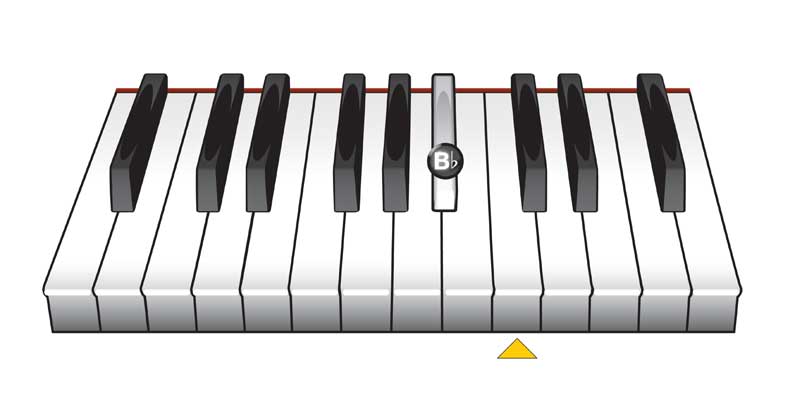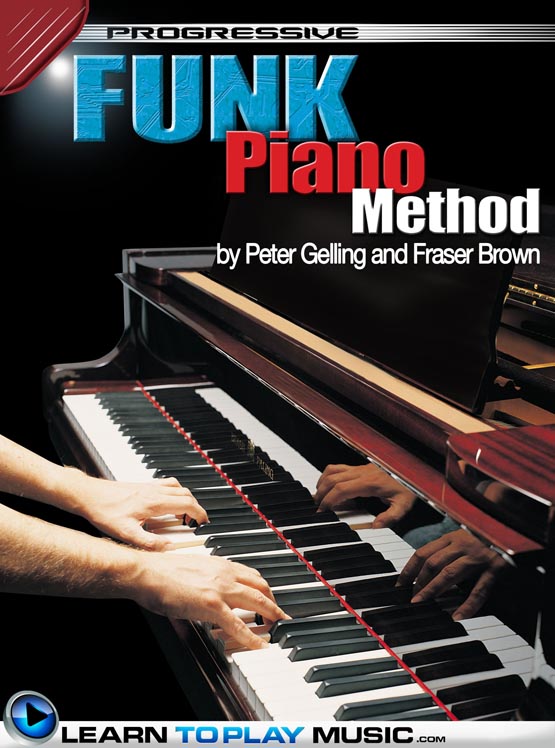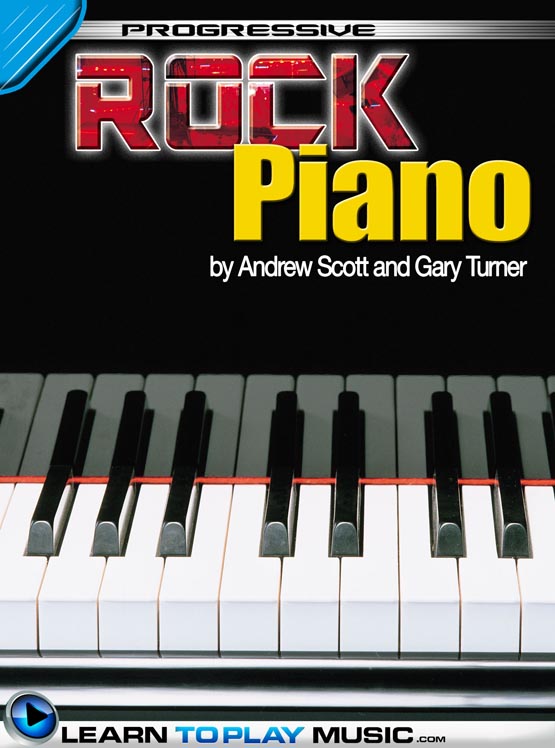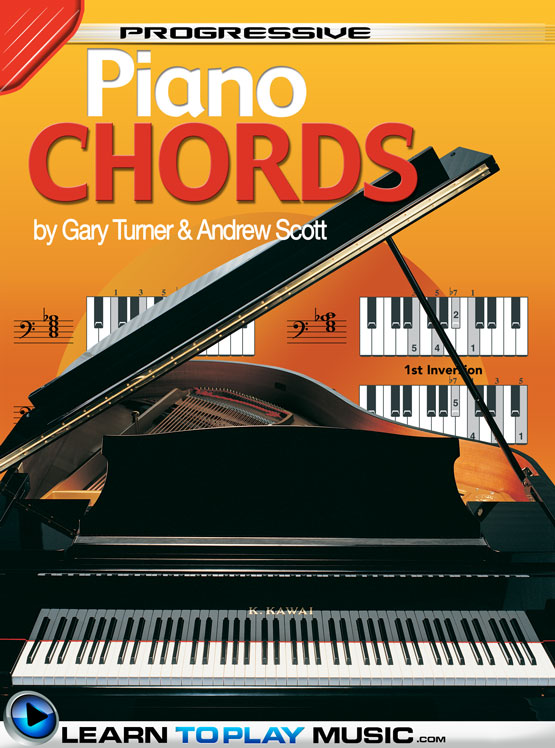
LESSON TEN
Flat Signs
This is a flat sign. When a flat sign is placed before a note on the staff, it means that you play the key immediately to its left. This key may be either black or white. The note B flat (written as Bb) is shown on the staff below.
The Note B Flat

This Bb note (above Middle C) is the black key immediately to the left of the B note, as shown in the diagram.
This Bb note is written on the third line of the treble staff.
12 Bar Blues
12 Bar Blues is a pattern of chords which repeats every 12 bars. There are hundreds of well known songs based on this chord progression, i.e., they contain basically the same chords in the same order. 12 Bar Blues is commonly used in Rock music and is the basis of Blues music.
Songs using the 12 Bar Blues Progression
- Original Batman T.V. Theme
- Hound Dog - Elvis Presley
- Rock Around The Clock - Bill Haley
- Roll Over Beethoven - Chuck Berry
- Blue Suede Shoes - Elvis Presley
- In The Mood - Glen Miller
- Shake, Rattle and Roll - Bill Haley
- Barbara Ann - The Beach Boys
- Johnny B. Goode - Chuck Berry
- Dizzy Miss Lizzy - The Beatles
- Surfin’ U.S.A. - The Beach Boys
- Good Golly Miss Molly - Little Richard
12 Bar Blues in the Key of C Major
The following 12 Bar Blues is in the key of C major, and uses some of the chords you have learned so far. When a song is said to be in the key of C major, it means that the most important chord (and usually the first chord) is the C chord.
| 42 | 12 Bar Blues in the Key of C Major |
This pattern of chords will probably sound familiar to you.
The Key of F Major
The F major scale starts and ends on the note F, and it contains a Bb note instead of a B note. Play The F major scale below and listen for the Do Re Mi Fa So La Ti Do sound. Songs that are in the key of F major contain notes from the F major scale and hence contain the note Bb.
| 43 |
Key Signature of F Major
Instead of writing the flat sign before every B note on the staff, one flat sign can be written after each clef. This means that all B notes on the staff are played as Bb, even though there is no flat sign written before them. This is the key signature for the key of F major. There is one flat sign after each clef.
| 44 | Marianne |
Marianne is in the key of F major. The left hand part here is a variation on the eighth note arpeggio style. Instead of playing the arpeggio straight up and down, the pattern alternates between the lowest note and the other two notes of each chord. This style of accompaniment is very popular in Classical music and is called an Alberti bass. Practice the left hand part by itself before combining it with the melody.
The song Molly Malone (also called "Cockles And Mussels") is a well known traditional Irish song and is written below in the key of F major. The left hand part is a variation on the Alberti bass pattern, altered to fit in with ^ time. Once again, practice each hand separately at first if necessary.
You have now learned all three of the basic methods of accompanying melodies: chord style, broken chord style and arpeggio style. The accompaniment you use can make a big difference to how good the overall piece of music sounds. You can often make a simple melody sound great just by giving it an interesting accompaniment. Go back through the book and experiment with various accompaniments to each of the songs. Remember that each accompaniment style is based on the same basic chord shapes.
| 45 | Molly Malone |
More Titles by LearnToPlayMusic.com
Progressive Beginner Electronic Keyboard
Beginner Level
An easy to follow Electronic Keyboard method for the complete beginner. Covers note reading, finger technique, using the automatic accompaniment function and playing chords with the left hand. Includes many well known songs in a variety of styles.
Progressive Blues Piano Method
Beginner To Intermediate
A great introduction to the world of Blues piano playing. All exercises sound great as well as teaching the necessary notes and techniques. Covers Shuffles, New Orleans and R&B styles along with lessons on soloing, improvisation and accompaniment.
Progressive Funk Piano Method
Beginner To Intermediate
Specifically designed for students who wish to play Funk piano, either in a Rock group or solo. Contains important information on creating piano parts, playing in major and minor keys and transposing. The exercises sound great as well as teaching the necessary notes and techniques.
Progressive Rock Piano
Beginner To Advanced
Covers all aspects of Rock Piano playing, featuring the most common Rock chords and progressions. Special emphasis is placed on music theory as it relates to Rock, including Blues scales, chord construction and substitution in the most common Rock keys.
Progressive Piano Chords
Beginner To Advanced
A great reference book for pianists of all levels. Contains a listing of more that 1000 chords arranged chromatically with all inversions, within 36 different chord families. Also contains an extensive body of music theory, ranging from how to read a piano keyboard, to a complete listing of all the major and natural minor scales. Also demonstrates the most common chords in each key, along with sample chord progressions, which you can play along with on the recording.




